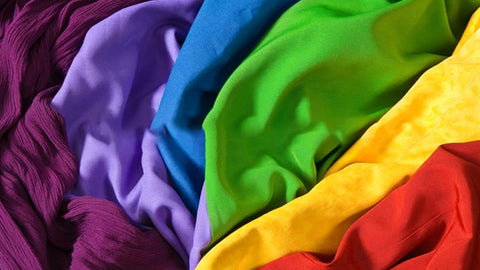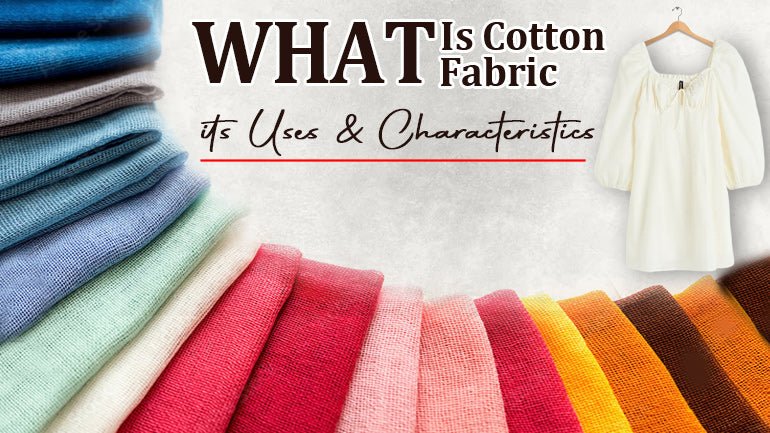It is obvious that you will eventually need fabric when you begin making cosplays. The real question is how to choose the right fabrics. It's long gone since I was unsure where to find fabric for cosplay.
Do you know what cosplay fabric is? Cosplay can be abbreviated as costume play. The participants use these costumes to show or make an impact on a character. They are used primarily in theatres, movies, and other performing arts. Cosplay is a growing trend that aims to make performing arts more real.
Technology has made it possible to plan, design, and manufacture cosplay items. Every cosplayer designs their own costume and spends a lot of energy and time on it to capture the character of their subject.
Fabrics That is Best for Cosplay

The best fabrics are essential to creating such a masterpiece. This guide will introduce you to the most popular fabrics for costume creation because of their shape-fitting properties as well as their distinct looks.
Slinky Matt Lycra

Slinky Matt Lycra, as the name implies, is slinky! It glides easily over the skin and can be cinched to fit. This is a great material for making your own superhero cosplay bodysuit and is popular for Halloween costume fabric. If the character you are creating comes from the oceans, then the water-repellent properties of Slinky Matt Lycra will be useful.
Organza

Organza fabric is often associated with bridal wear. However, it is also the best cosplay fabric. Organza is a great option for skirt overlays and is essential when creating a Disney princess gown or other feminine designs. Its transparent finish, subtle sparkle, and sheer finish evoke images of a magical land. Despite this feminine quality, you can use it to replicate more masculine elements, such as fire. You can make it look like flames are licking your skin or incorporate it into a headpiece to make a statement.
Satin

Satin fabric is usually made from silk or polyester. It is shiny on one side and dulls on the other. However, it can be very affordable. Satin is best for dresses and special occasions. You can also use the wrong side of the fabric to create a different texture in a pinch. It is usually very easy to sew but sharpen your needle, or you might pull threads from the fabric.
The sateen fabric is similar to satin, but it is usually a woven cotton fabric. It tends to be less shiny than satin and less slippery than satin. You can make beautiful dresses from them, but they have a stronger structure.
Nylon

One of the most popular synthetic fibers is Nylon. Nylon is best used for knitting and making hosiery. It's lightweight, smooth, and strong. A blend of nylon can be added to increase its durability. You can dye nylon with many colors, but it will not lose its color. Nylon is a versatile, soft-care fabric that can be used in many different colors.
Chiffon

Chiffon fabric is one of the favorite lightweight options for everyone. It is translucent and very fine. It can be used as an overlay over other fabrics. However, it is not easy to work with and won't work well if you want to make a garment with structure. The georgette fabric is slightly thicker and more transparent.
For a crisp alternative, you can use organza. It is great for see-through bows and translucent sleeves. It is also shinier and more flexible than chiffon.
Silk

Silk fabric is a popular natural fiber for costume design because of its soft texture; Silkworms produce sericin as well as fibroin, which are proteins that makeup silk's structure. Silk is flexible and ideal for cosplay outfits. Silk is very flexible and has excellent insulation properties. It also resists moisture. Silk is extremely soft and smooth, but it can also be very expensive. It needs special care as many amateur seamsters aren't aware that silk can absorb water and cause problems. Silk is expensive and should be reserved for special or rare costumes. However, silk can make a stunning, shiny gown or suit.
Neoprene

Neoprene, a synthetic rubber, is great for costumes and props. Because of its spongey texture, it is ideal for armor and weapons as it will not cause any harm. It is also very durable and can be used outdoors. It's also flexible and can be worn in all temperatures. Although it may seem bulky, neoprene can be used as an outdoor cosplay material and is an excellent insulator. So it's no surprise that neoprene is also a great fabric for making face masks.
No matter what fabric you choose, make sure to browse our selection of fabrics for your next cosplay project. You don't need to be an expert cosplayer to create your perfect costume.
Things to Consider When Choosing the Fabric for Costumes
Fabric is the key ingredient to making cosplay seem real. You should consider several factors when selecting fabric for cosplay.
-
Quality
The most important aspect of any fashion trend is quality. This is something that the new fashion industries understand, and they choose the highest quality fabric for the design cosplay. Designers can assess the quality of the fabric by evaluating its thickness, length, feel, and thread type.
It is important to remember that a person may wear the dress for a long period of time. Good quality fabric will allow the participant to perform in any weather condition.
When selecting fabrics for costumes, make sure to test them against your skin for comfort and breathability. Fabric quality is a key factor in the outfit's design and durability. The cosplay industry will be more successful if it uses high-quality fabric.
-
Fabric Type
Fabric can be classified as either natural, synthetic, or a combination of both. Although experts can classify two types, woven and knitted materials are the most common.
-
Woven Material
For sensitive skin, natural fabrics like silk, cotton, and linen are suitable. You can also call natural fabrics woven materials.
Woven materials can be stitched quickly and have no stretch. The most common woven materials include basic cotton, linen wool, silk, polyester, chiffon, organza, brocade, and many others.
Cosplay requires a rich look that these fabrics can provide quickly.
A lightweight, comfortable costume is essential for cosplay. However, linen and cotton are great choices. If the customer is looking for a fluid effect and less GSM, then organza and chiffon are ideal.
Brocades and silk are good options. When the outfit must be heavy or suitable for winter, choose a fabric with a higher GSM, like wool and twill.
-
Knit Materials
Additionally, the fibers of these materials are knitted together and have a stretchy quality. There are many knit materials that are used, including spandex, cotton knit fleece, and other types.
Synthetic fabrics, such as rayon, nylon, acrylic, spandex, and nylon, can also be used for creating a particular outfit. They are much easier to make cosplay outfits with than natural fabrics. Blended fabric is a good choice for cosplay with a distinctive look. They usually contain a mixture of different fabric types.
Although the costume must be flexible and comfortable to wear, it is possible to get the cotton knit fabric to make t-shirts and yoga pants. The costume should be fitted and flexible enough to wear as a swimming costume, so spandex might be a good choice.
-
Color
Cosplay fabric color choice is important to make an impact on characters. External elements such as lights and lighting are used to do this. Clients might need different shades of color. A color palette should contain a range of colors. This will enable you to meet all the demands of cosplay. If you are a designer or individual and looking for fabrics for costumes, then At Ice Fabrics is the best choice for you. You can shop for a variety of fabrics for costumes in a range of colors and designs.
Cosplays can be used for any event, but they are not limited to one event. They will be used multiple times, stored, and cleaned. The client can test the colors in chemical solutions to verify the color quality. When choosing fabric, it is important to consider the color quality. To understand the fabric's quality and durability, you must have knowledge of the fabric.
-
Weather, occasion, and design
Cosplay doesn't have to be limited by weather. Therefore, it is important that you choose a fabric that can be used in all types of weather. Your experience and your design will differ, so you need to select fabrics that can be used for different events.
-
Shrinkage
Experts consider the important aspect of the material's shrink factor when fashion designers finalize the material. The fabric quality and shrink factors are determined by thread quality, as well as other testing parameters. A cotton fabric is more susceptible to shrinkage than silk fabric.
The great idea is to purchase material with a shrinkage factor already tested.
-
Right Fabric Grain
You must ensure that you buy the right grain cloth. Otherwise, all your hard work will be wasted. The wrong grain fabric can cause problems when stitching and won't give the desired look for cosplay. Therefore, it is important to consider all possible looks and occasions when choosing grain fabrics.
-
Fabric Weight
The GSM refers to the weight of the material. Therefore, a heavier fabric will have a higher GSM. However, lighter fabrics will have lower GSM. For cosplay, many prefer lightweight fabrics such as organza and chiffon. It is important to match your selection with market trends. Consider customer demand when selecting the fabric weight.
Conclusion
The fabric choice will ultimately depend on the project and your personal preferences. You can best determine which fabric to use by going to a fabric shop to touch and feel the various fabrics until you choose the one that you like the most. There will be differences in the weight and thickness of each fabric. Cosplay can be considered performing art. You need to consider comfort, durability, and breathability.
You need to consider the following factors in order to choose the perfect fabric: location, weather, comfort, etc. It will help you choose the right type of fabric for your Cosplay.
Are you looking for your next project idea? Then, check out our collection of fabrics to design your costumes. You can find a wide range of fabrics in thousands of yards at affordable prices.



